Clear passage: New kind of surgery unclogs sinuses; Tiny balloon is the key to sinuplasty
By SUE REINERT, The Patriot Ledger
Jade Steffy yearned for the simple pleasure of taking a deep breath. But it was an impossible dream with her severe sinus infections. The 22-year-old Kingston resident had scored high on college aptitude tests but she couldn’t finish even two years of higher education. She regularly lost jobs because of fatigue and absences.
Her lifelong sinus and tonsil infections had worsened in the past year. ‘‘It affects everything,’’ Steffy said.
She couldn’t breathe, therefore she couldn’t sleep, therefore she often was too tired to study or work. ‘‘A lot of things got thrown on the back burner,’’ she said.
That helps explain why Steffy lay on an operating table at Jordan Hospital in Plymouth last month, ready to undergo a new kind of procedure for opening clogged sinuses.
Dr. Bernard Durante, an ear, nose and throat specialist and chief surgeon at Jordan Hospital, had suggested the operation, called sinuplasty.
In the procedure, the surgeon passes a balloon-tipped tube through the patient’s nose to the narrowed area that’s causing problems, then inflates the balloon.
‘‘It gets rocky hard,’’ firm enough to cause tiny fractures in the underlying bone and widen the opening to the sinus, Durante said.
Sinuplasty uses the same technique as the artery-clearing procedure called angioplasty for heart patients. Government regulators approved sinuplasty equipment for marketing in 2005. Since then, some surgeons have embraced the procedure, although its long-term effectiveness has not been proven.
Less invasive
Fifty years ago, patients like Steffy faced the prospect of scarring and even disfigurement from sinus surgery that required incisions into the face. Then surgeons developed less invasive options that used a small tube called an endoscope to access sinuses.
Endoscopic surgery that cuts away tissue and bone, called Functional Endoscopic Sinus Surgery, or FESS, is still the leading option for patients with sinus disease that doesn’t respond to medication.
Durante said it was two years ago that doctors began to experiment with the gentler balloon technology, and he was trained in the procedure.
Durante has performed sinuplasties since July and is suggesting them to more and more patients, he said. South Shore Hospital in Weymouth is the only other local hospital that offers the surgery.
The balloon ‘‘helps us access places that are very difficult to access’’ and it works ‘‘as good or better than FESS,’’ Durante said.
It’s easier on patients because the balloon doesn’t destroy the lining of the sinuses, Durante said. Microscopic fractures of the bone heal quickly, he said. Patients suffer less pain and recover faster.
‘‘There’s no downside other than the potential that what we did won’t last; that doesn’t seem to be the case so far,’’ Durante said.
Still, the most recent study to examine sinuplasty followed patients long enough to establish that sinuses stayed open for six months, scarcely long-term. Some patients, such as those with polyps and patients with problems in ethmoid sinuses next to the nose, can’t be treated with sinuplasty.
And not all surgeons recommend the procedure. ‘‘There was a lot of controversy at academic meetings,’’ Durante said. ‘‘The older school was very much opposed to this. I brought this up at an eye and ear meeting a year ago and it was pooh-poohed as experimental.’’
But for Durante, ‘‘particularly with frontal sinus disease I would make this my first choice.’’
‘‘I feel pretty good’’
Steffy, under general anesthesia, was covered from head to foot in white sheets; only her face was uncovered. A fluoroscope towered behind her head.
Screens on both sides of the operating table showed pictures of glistening pink and red membranes inside Steffy’s nose. Another screen displayed cross-sections of her skull in four quadrants, derived from CT-scans taken earlier. Durante would use the diagrams to help place the balloon in the right spot.
Durante inserted a right-angled tube into Steffy’s nose and threaded a thin wire through the tube into the target sinus. The wire would guide the balloon-tipped tube to the narrowed opening.
Now the screens showed the deflated balloon no thicker than a pencil line moving along the wire to the target. At Durante’s command, a surgical technician began inflating the balloon, calling out the numbers as the pressure increased.
Durante enlarged four sinus openings in 35 minutes, looking carefully at each balloon placement. At one point, he withdrew the guide tube and reinserted it.
‘‘I feel better about that,’’ Durante said. ‘‘That was a false passage.’’
Durante also took out Steffy’s tonsils, repositioned her septum, the membrane dividing her nose, and cleared her ethmoid sinuses using FESS.
Steffy had to return to the hospital on Easter Sunday, two days after the procedure. ‘‘I woke up in excruciating pain. My nose was still bleeding and my throat felt awful. I was admitted for three days,’’ she said.
But a week later, Durante removed splints from Steffy’s nose ‘‘and it was instant relief,’’ she said.
‘‘She just had a lot of post-operative discomfort, more than normal from the tonsil standpoint,’’ Durante said this week.
‘‘The sinus issue went fine,’’ he said. ‘‘She’s doing very well.’’
These days, Steffy feels rested after sleeping for eight or nine hours, although she still senses some pressure in her sinuses and her throat has not healed.
‘‘I feel like when I breathe in, I breathe in a full breath,’’ Steffy said. ‘‘I feel pretty good.’’
